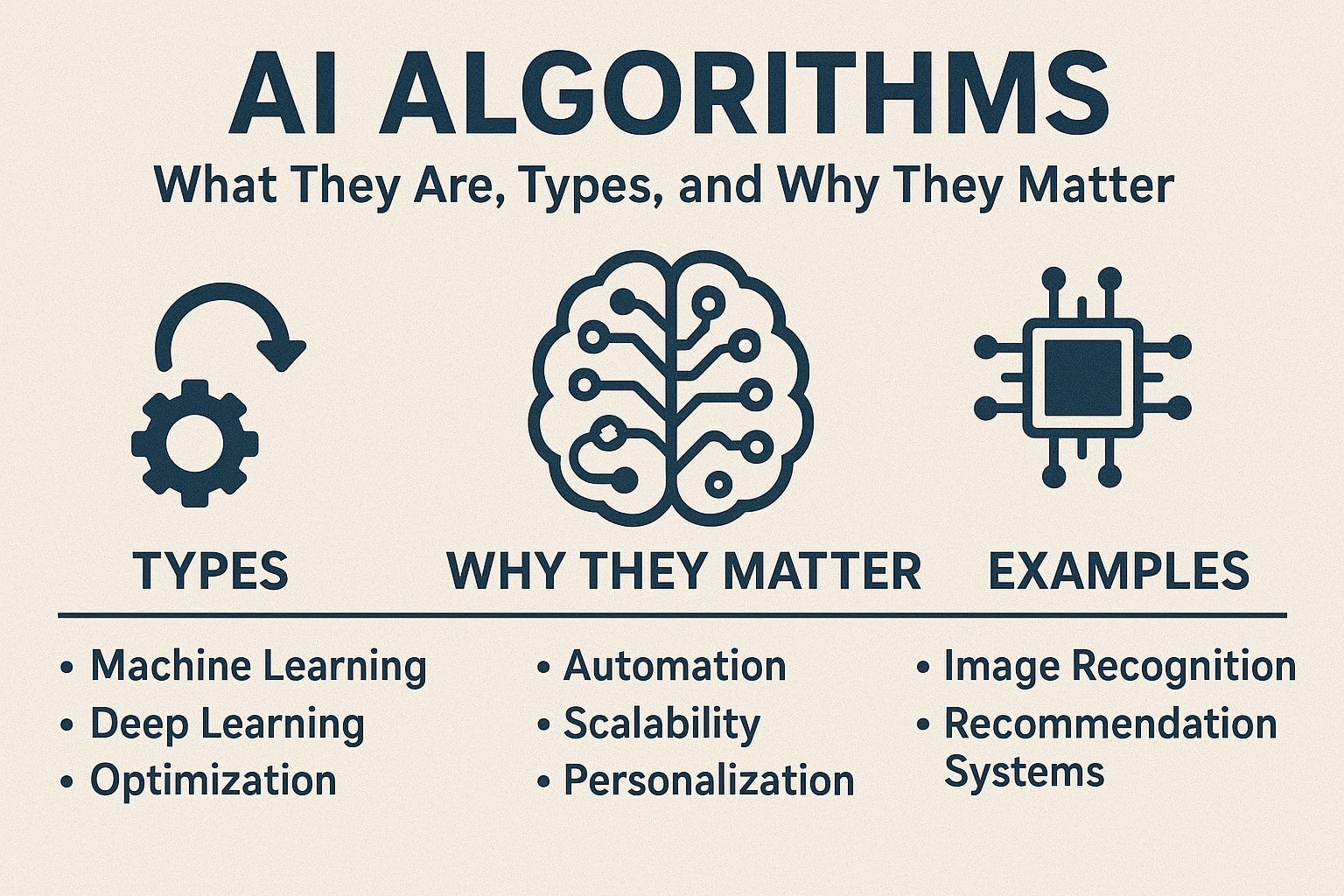If data is the fuel of Artificial Intelligence, then AI algorithms are its engine. These rule-based methods help computers solve problems, learn from information, and make decisions. To truly understand Artificial Intelligence, it’s essential to grasp how intelligent algorithms work in practice.
What Are AI Algorithms?
An algorithm is a procedure for completing a task or solving a problem. A recipe is an algorithm for cooking. The instructions for assembling furniture are also algorithms. In computing, AI algorithms represent the mathematical logic that powers machine learning systems, adaptive models, and decision-making software.

How Algorithms Drive Intelligence in AI
Unlike simple instructions, these adaptive algorithms can respond to new information and handle uncertainty. Their role in Artificial Intelligence includes several important tasks:
- Finding patterns — discovering trends in large datasets.
- Making predictions — forecasting outcomes such as sales, demand, or weather.
- Optimizing decisions — selecting the best option among many choices.
- Learning over time — improving performance automatically as data grows.

Types of AI Algorithms
There are several categories of AI algorithms, each created for solving different challenges:
- Supervised Learning — learns from labeled data (e.g., spam vs. not spam). Examples: Linear Regression, Support Vector Machines (SVM), Random Forest.
- Unsupervised Learning — finds structure in unlabeled data (e.g., customer segmentation). Examples: K-Means Clustering, Principal Component Analysis (PCA).
- Reinforcement Learning — learns by trial and error with rewards (e.g., robots or game-playing agents). Example: Q-Learning.
- Deep Learning — neural networks for tasks like vision, speech, and text. Architectures include CNNs, RNNs, and Transformers.

Data, Algorithms, and Compute: The Three Pillars
Modern Artificial Intelligence relies on three essentials working together to deliver results:
- Data — the raw material for training models.
- Algorithms — the methods that transform data into insights.
- Computing power — the hardware that enables training and inference at scale.
Without effective algorithms, large datasets are just noise. Without data, models are powerless. And neither can achieve breakthroughs without sufficient compute resources.

Further Reading and References
Learn more about AI algorithms and Artificial Intelligence with these trusted resources: Stanford Encyclopedia of Philosophy (AI overview), IBM: Machine Learning explained, and Stanford CS231n course notes. For related articles on our site, see What Are Neural Networks? and Machine Learning vs. Deep Learning.
Conclusion
In summary, AI algorithms are the backbone of Artificial Intelligence. They turn raw data into predictions, insights, and decisions — powering the smart tools and technologies we use every day.
